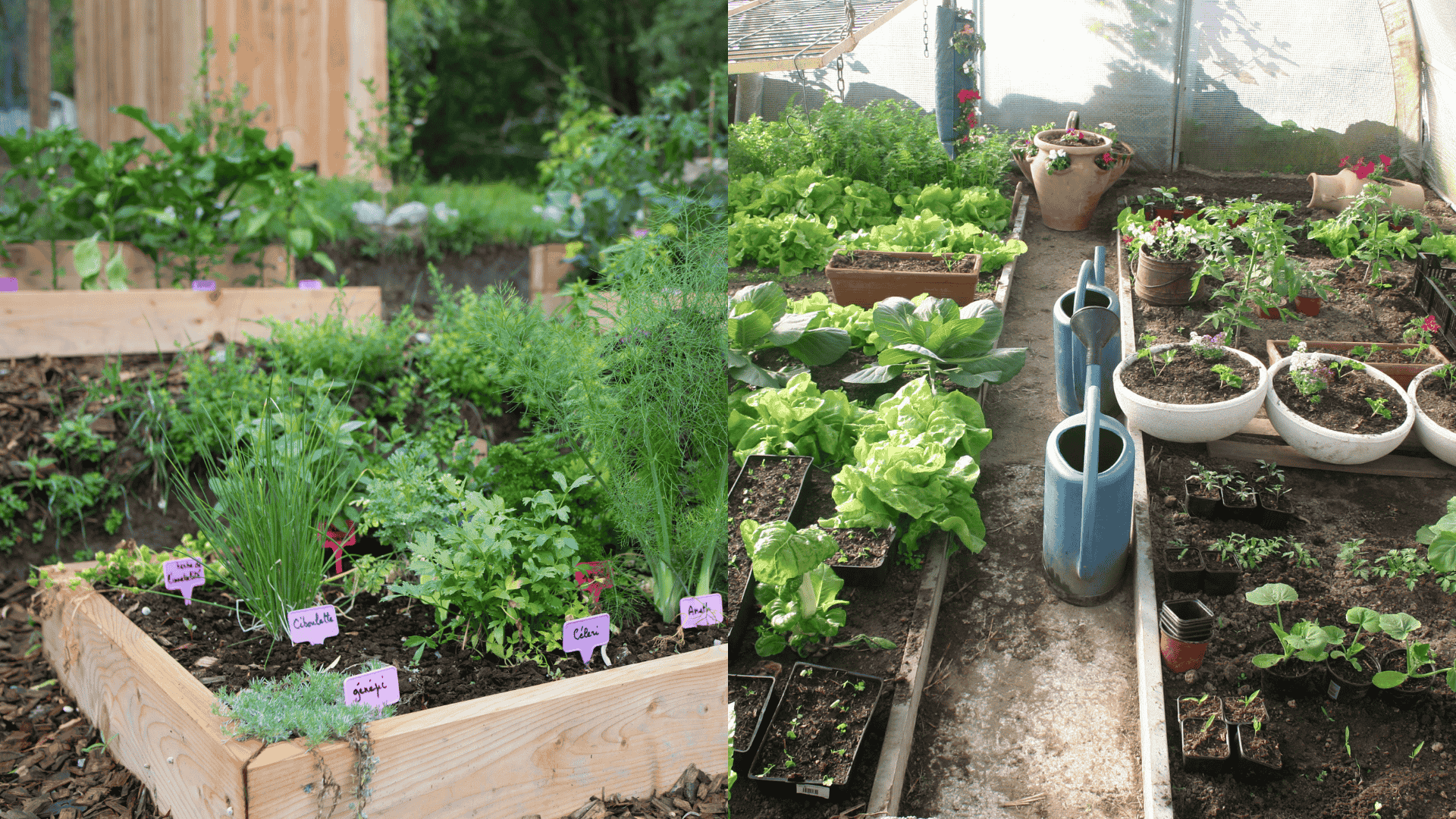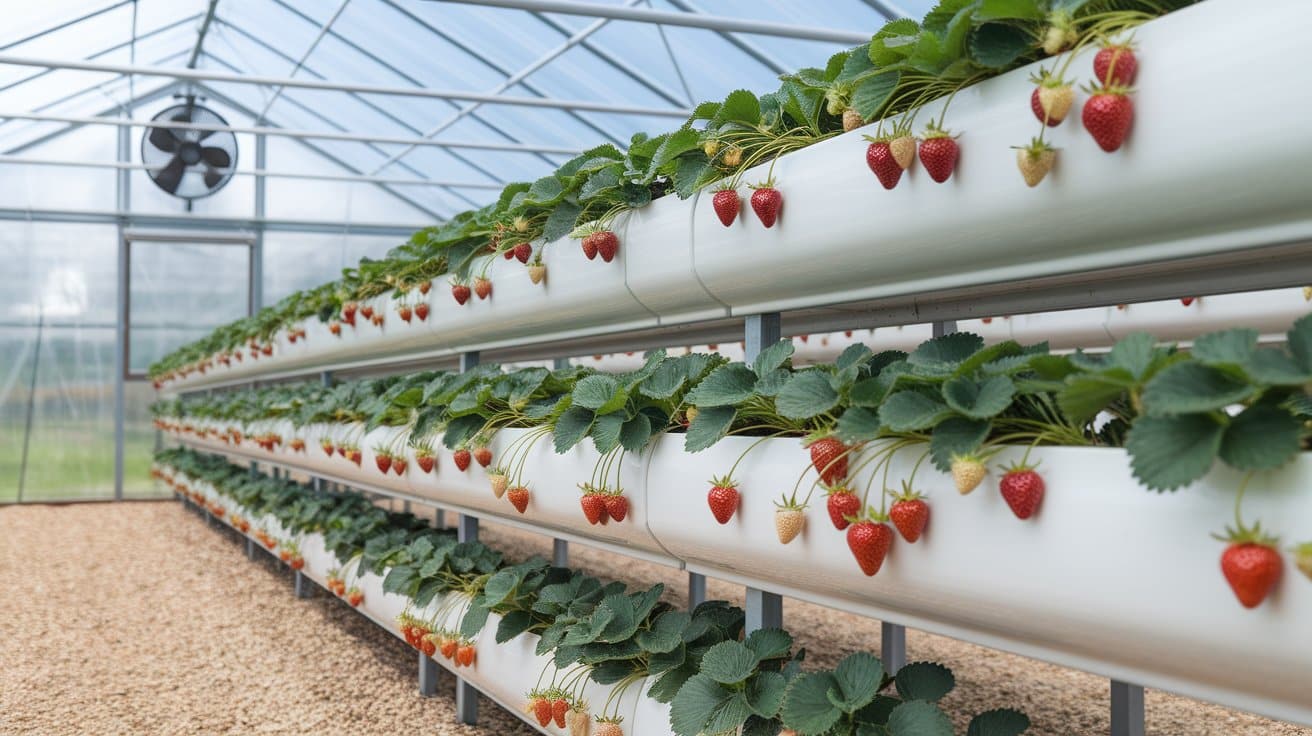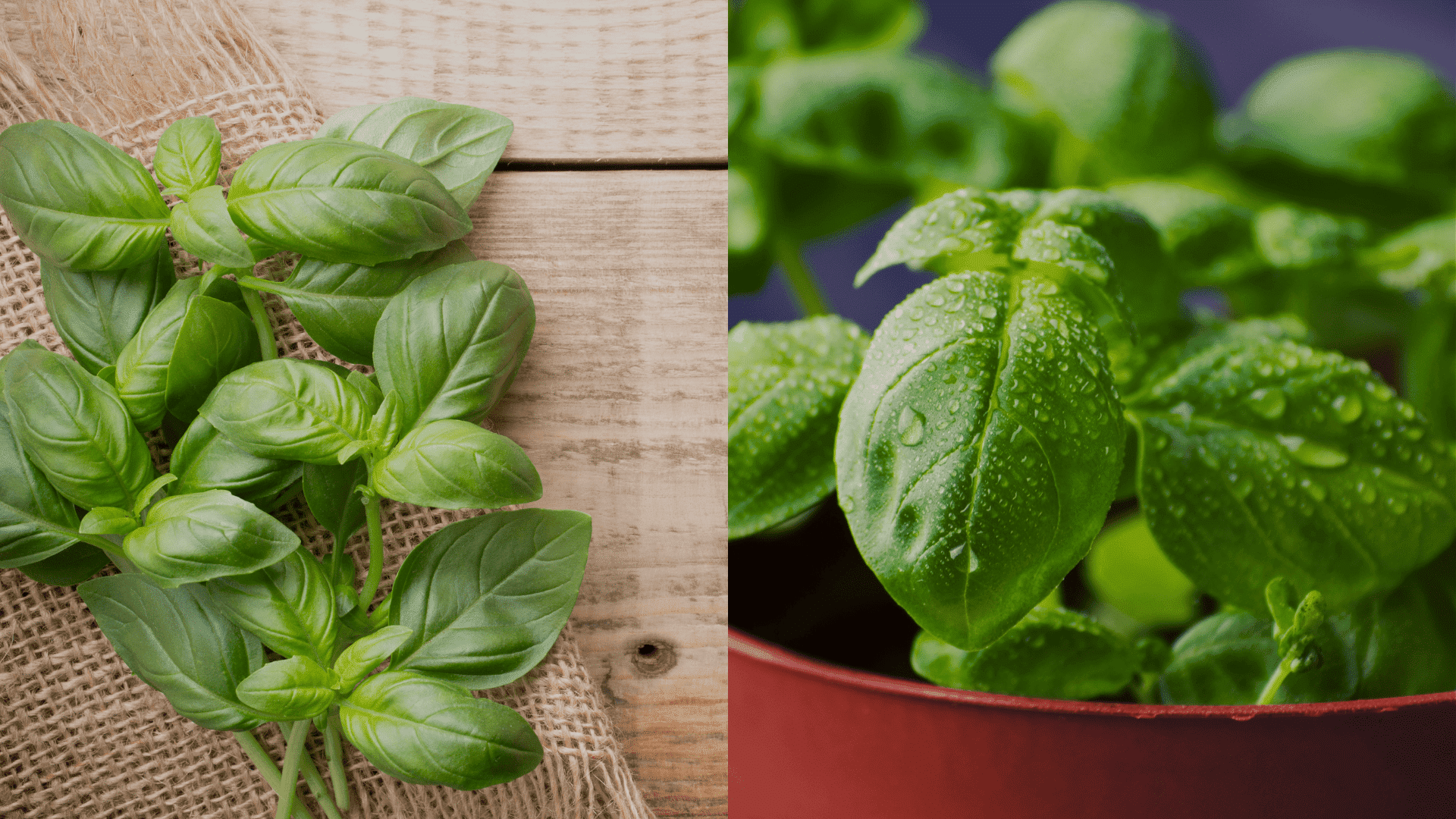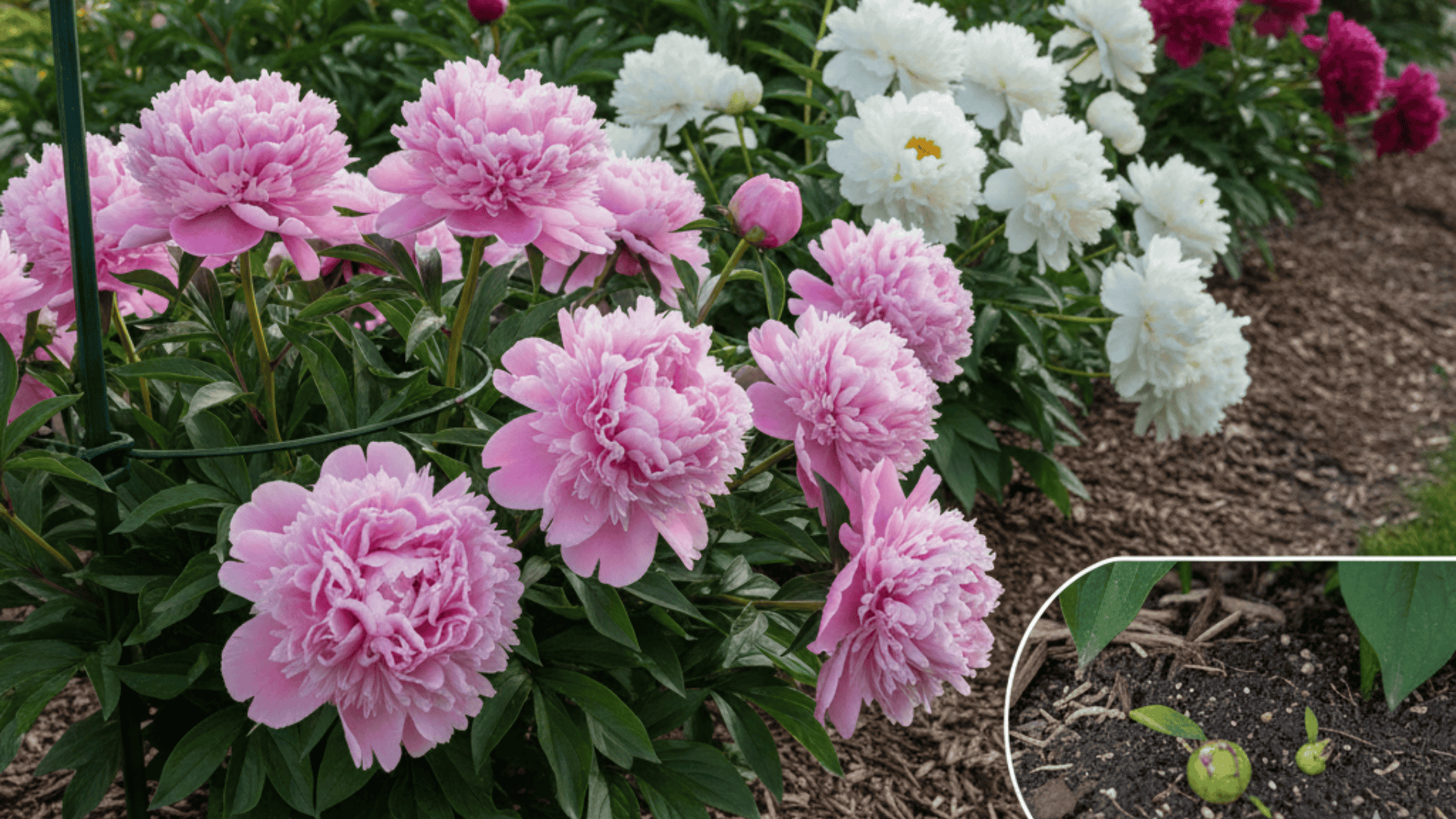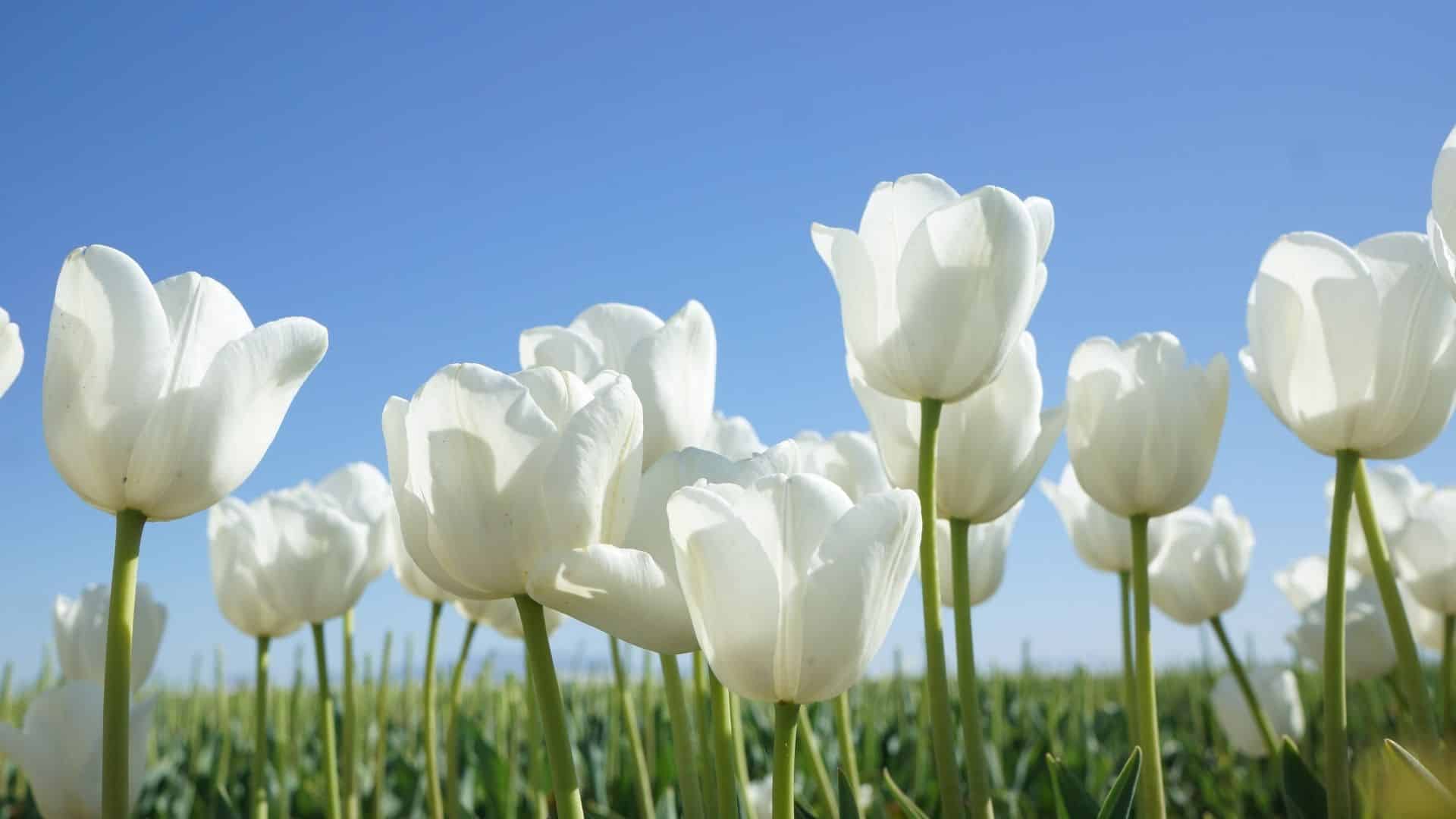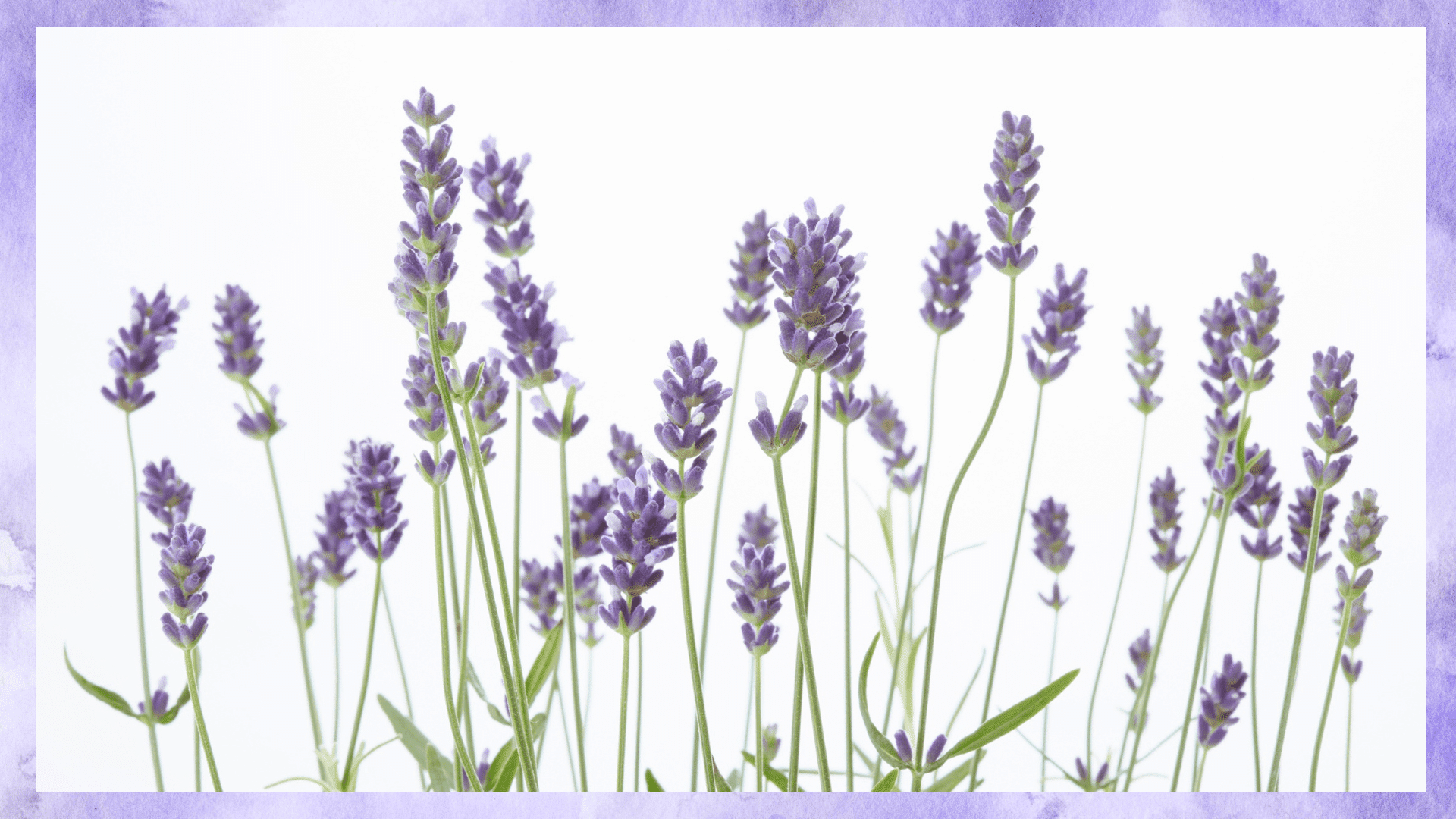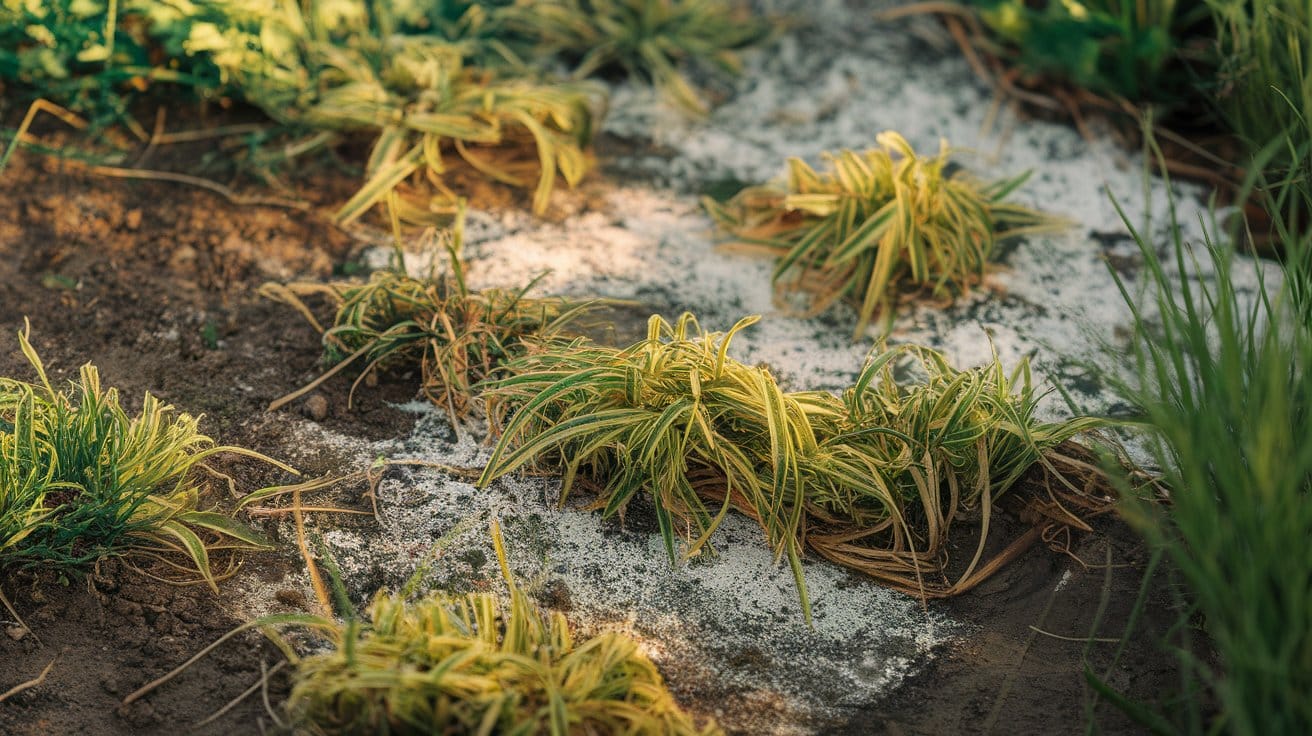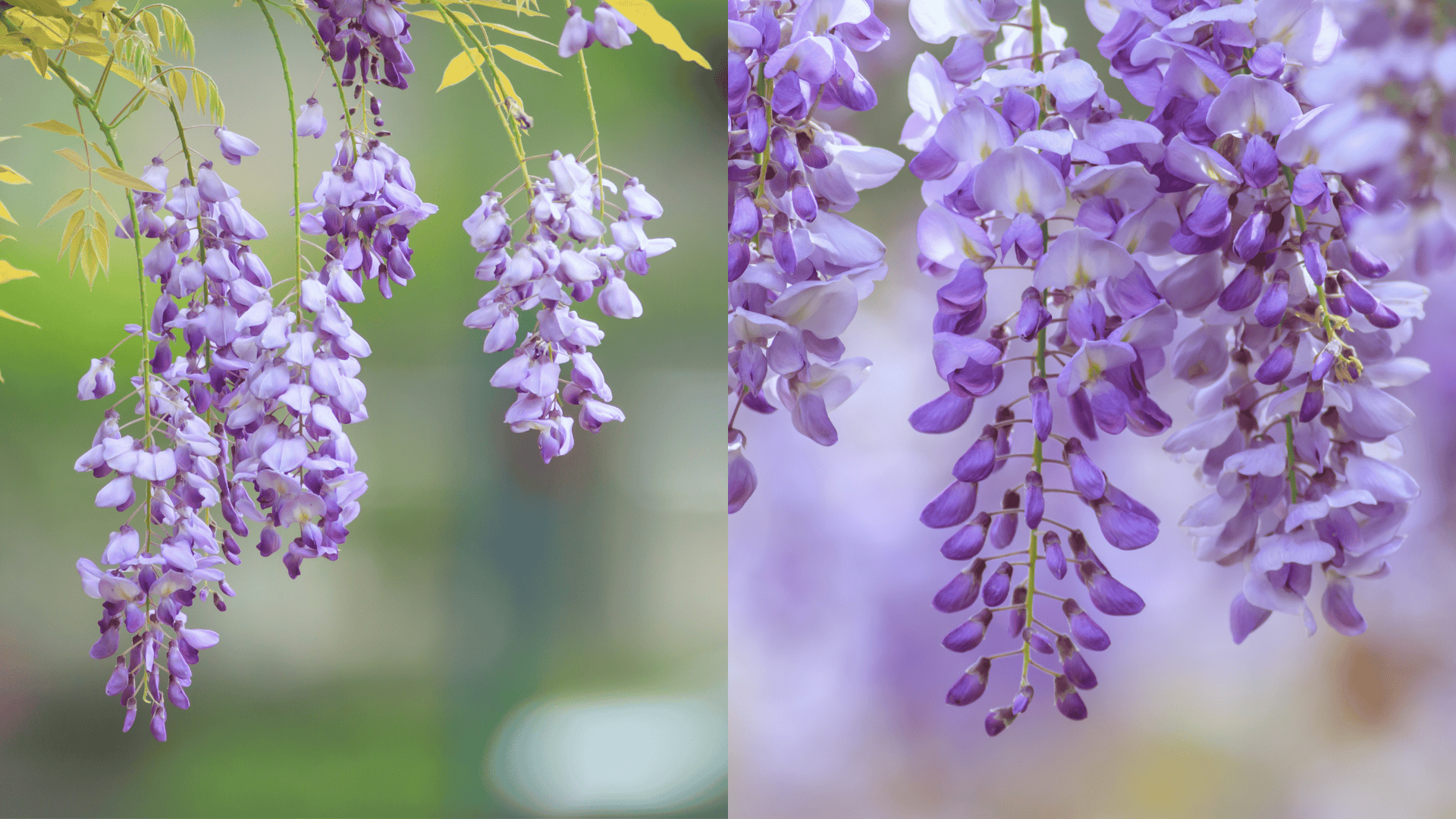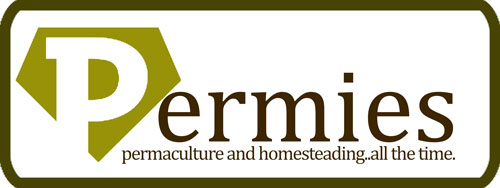What is a Potager Garden?
The word “potager” originates from the French term for a kitchen garden, specifically referring to the area where vegetables for the soup pot (potage) were cultivated.
However, a potager is far more than a simple vegetable garden. It’s a type of French kitchen garden
French kitchen gardens have a rich history dating back to medieval monastery gardens and the elaborate gardens of French châteaux.
These spaces were designed to be both practical and visually pleasing, with careful attention paid to layout and plant combinations.
What sets a potager apart from conventional vegetable gardens is its emphasis on symmetry, careful ornamentation, and the intentional mixing of plant types.
Vegetables aren’t segregated from flowers and herbs; they’re all part of the same beautiful composition.
French Garden Design Features in a Potager
French garden design brings several key principles to the potager concept that make it distinctive and visually appealing.
The following elements work together to create a garden that’s both functional and beautiful:
1. Symmetry and geometry form the backbone of potager design. Beds arranged in squares, rectangles, or circles create visual order while plants provide softness and movement.
2. Mixing plant types is central to the potager philosophy. Vibrant lettuces grow alongside fragrant herbs and colorful flowers, creating diversity that looks beautiful, supports beneficial insects, and helps with pest management.
3. Year-round appeal comes from selecting plants with different growing seasons and incorporating evergreen herbs or ornamental elements that keep your garden attractive even during the off-season.
4. Pathways, borders, and focal points provide structure and visual interest. Well-placed trellises, arbors, or a simple stone birdbath draw the eye and give the garden permanence.
Planning Your Potager Garden Layout
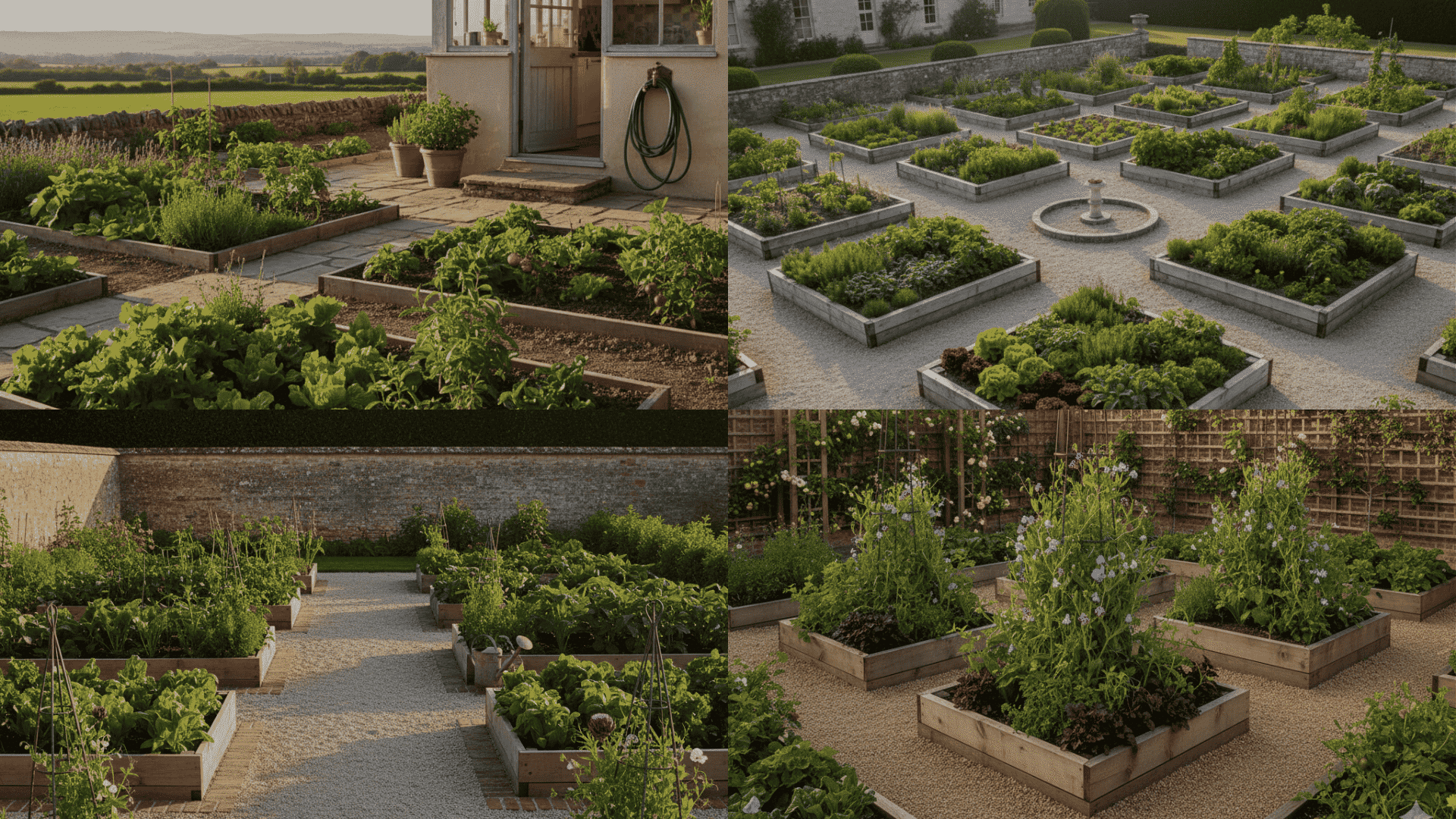
Successful potager gardens begin with thoughtful planning.
Taking time to carefully think through your layout, pathways, and plant placement will save you effort later and result in a garden that functions smoothly while looking beautiful.
Consider these key elements as you design your space:
Location selection is critical. Choose a spot with at least six hours of daily sunlight, kitchen access, and a nearby water source.
Bed design should balance beauty with practicality. Keep raised beds 3-4 feet wide and arrange them in geometric patterns for easy reach and visual appeal.
Pathways should be 2-3 feet wide for comfortable movement. Use gravel, brick, or wood chips for a formal look.
Vertical elements like trellises and obelisks maximize space and create height variation as visual anchors.
7 Potager Garden Layout Ideas
Designing your potager garden layout blends creativity with purpose.
Choose between a symmetrical or relaxed layout to design a garden that’s both practical and beautiful.
1. Classic French Cross Design
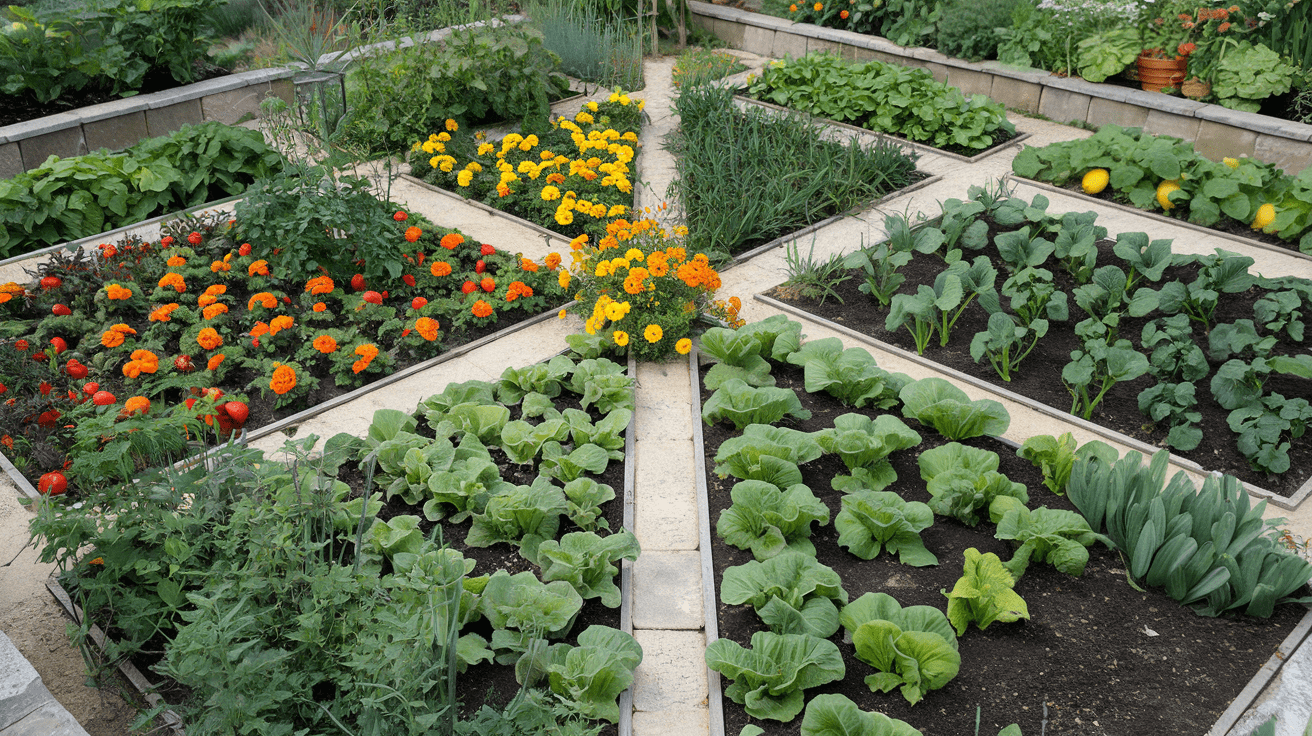
A traditional layout with four equal beds divided by intersecting paths forming a cross shape.
- Ideal for symmetry and easy access from all sides.
- Works beautifully with a central focal point such as a birdbath or sundial.
2. Walled Courtyard Potager
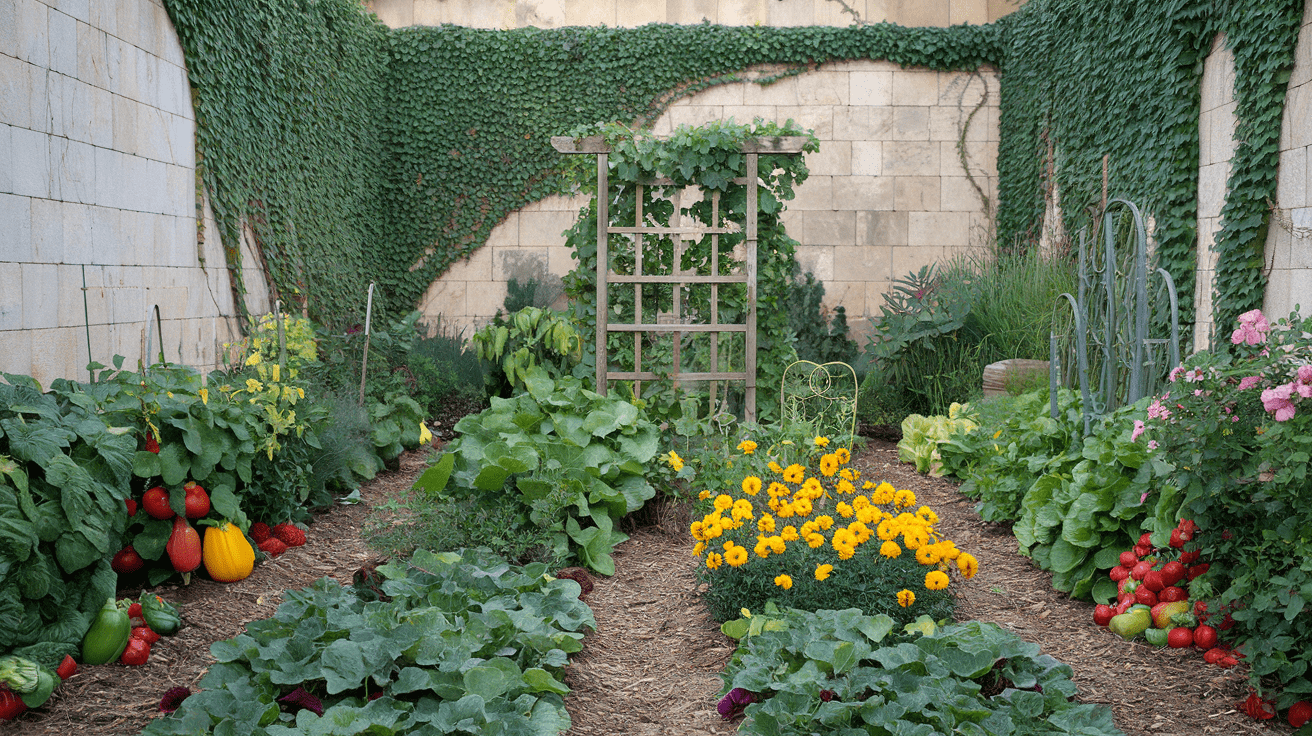
Inspired by old French château gardens, this layout uses low walls or hedges to frame raised beds.
- Protects plants from wind and adds structure.
- Perfect for integrating climbing roses or espaliered fruit trees.
3. Circular or Wheel Layout
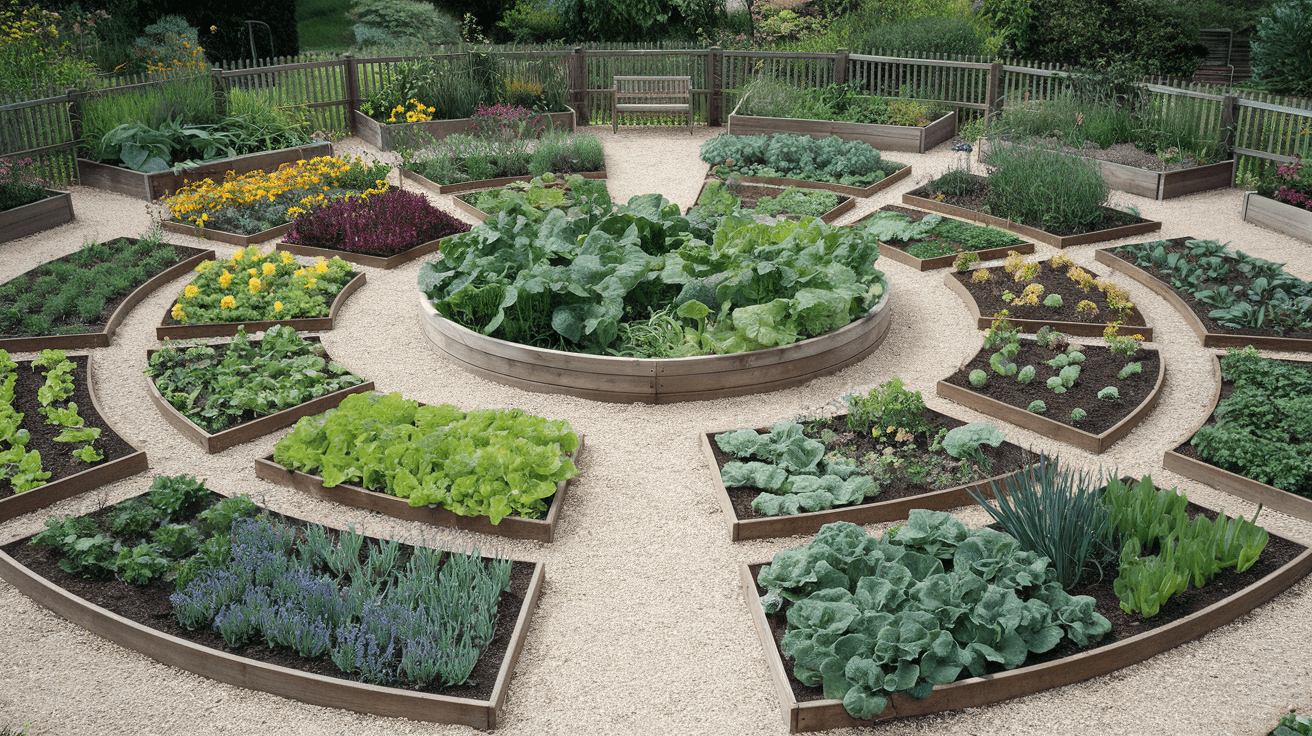
Beds radiate out from a central hub, creating an eye-catching geometric pattern.
- Allows visual harmony from any angle.
- A central feature, like a fountain, herb spiral, or sculpture, completes the look.
4. Kitchen Path Potager
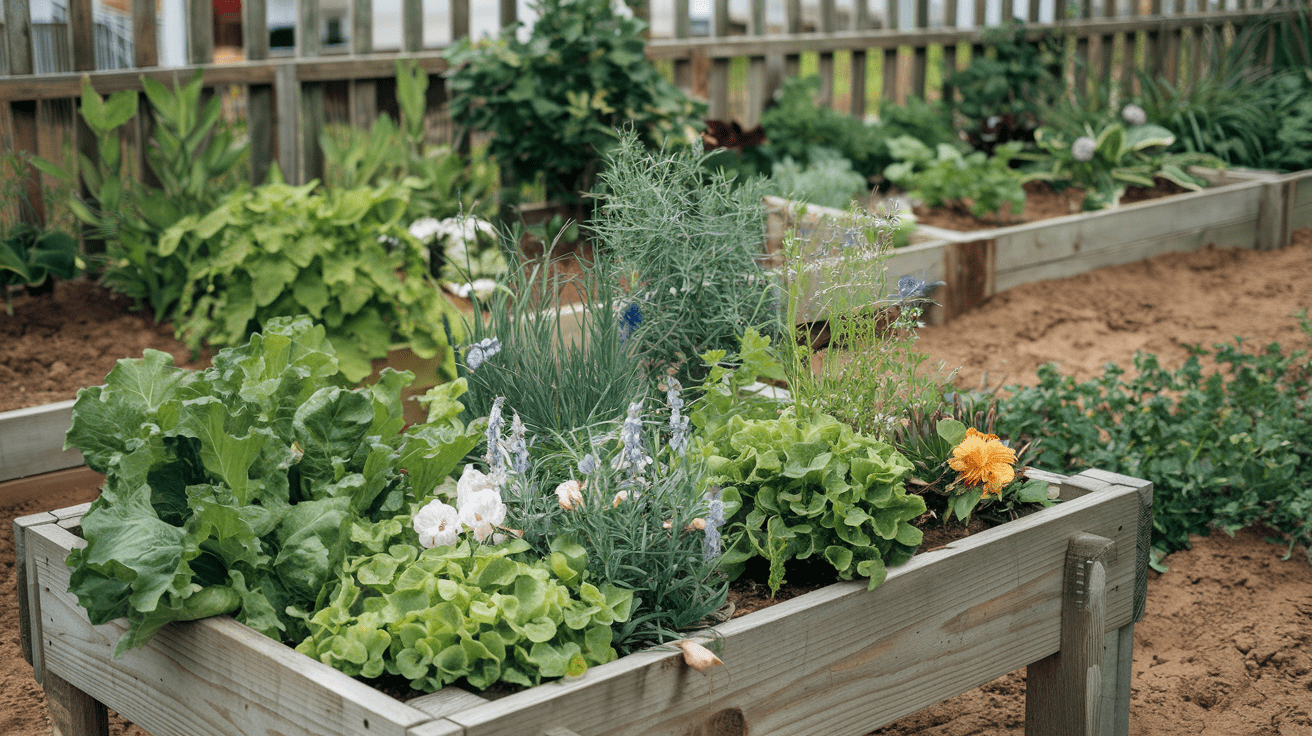
Compact, functional, and ideal for small spaces near the kitchen door.
- Focuses on accessibility and frequent harvests.
- Combines herbs, greens, and small fruits for everyday use.
5. Checkerboard Layout
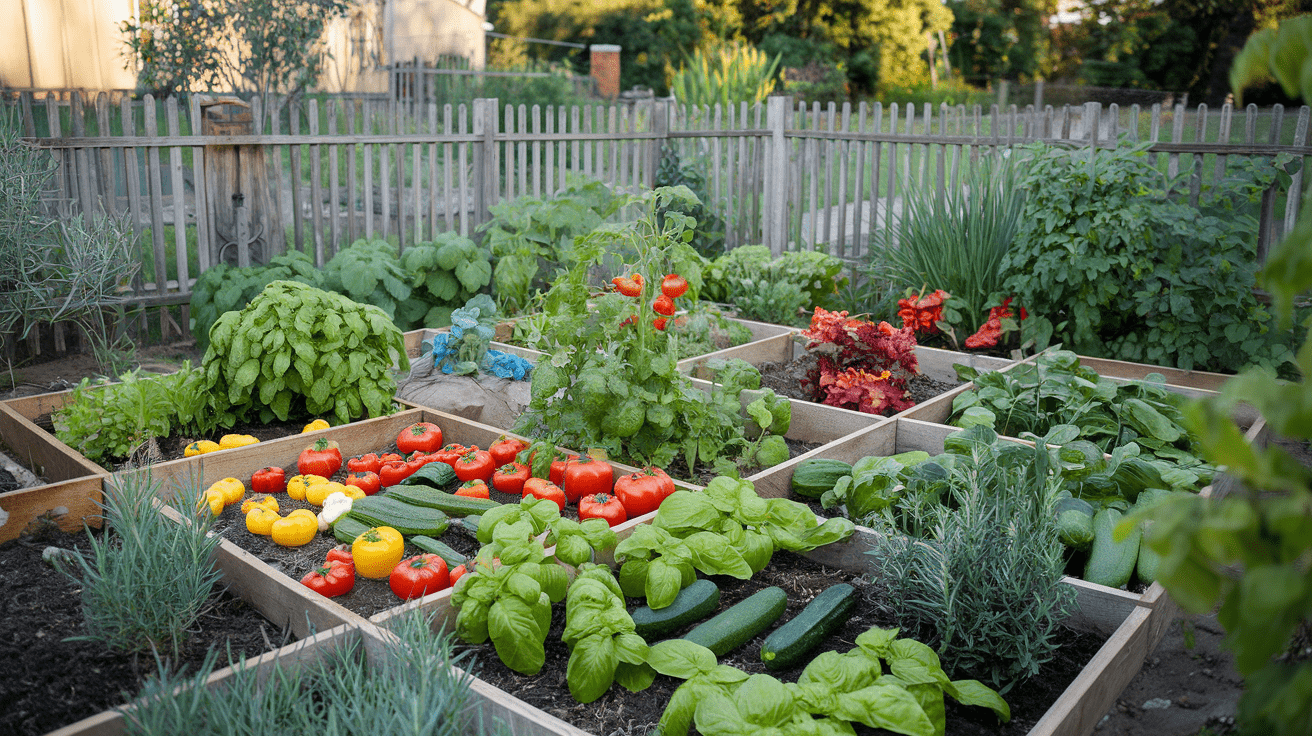
Alternating squares of vegetables, flowers, and herbs creates contrast and rhythm.
- Enhances pollination and natural pest control.
- Works beautifully with flat gardens or raised beds.
6. Cottage-Style Potager
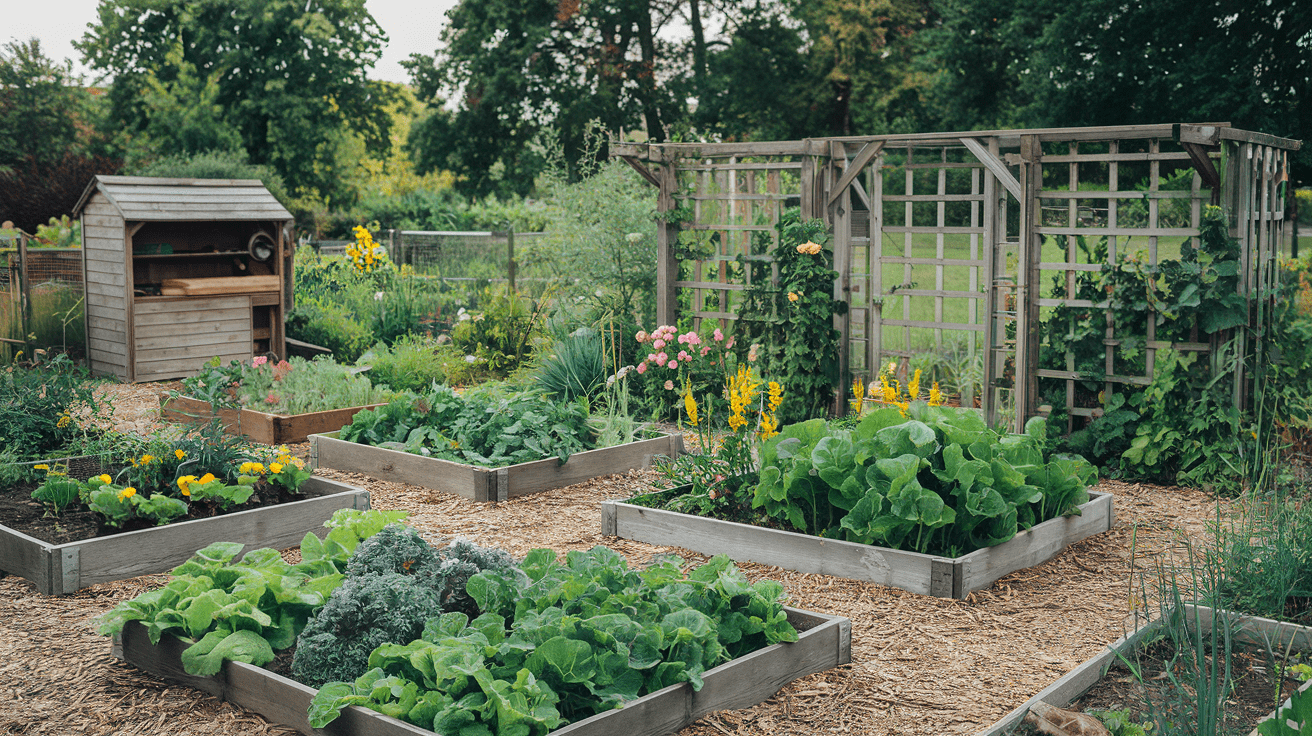
A looser, more natural design that mixes vegetables and flowers in curved beds.
- Encourages biodiversity and a relaxed charm.
- Perfect for gardeners who enjoy a softer, informal look.
7. Vertical and Tiered Potager
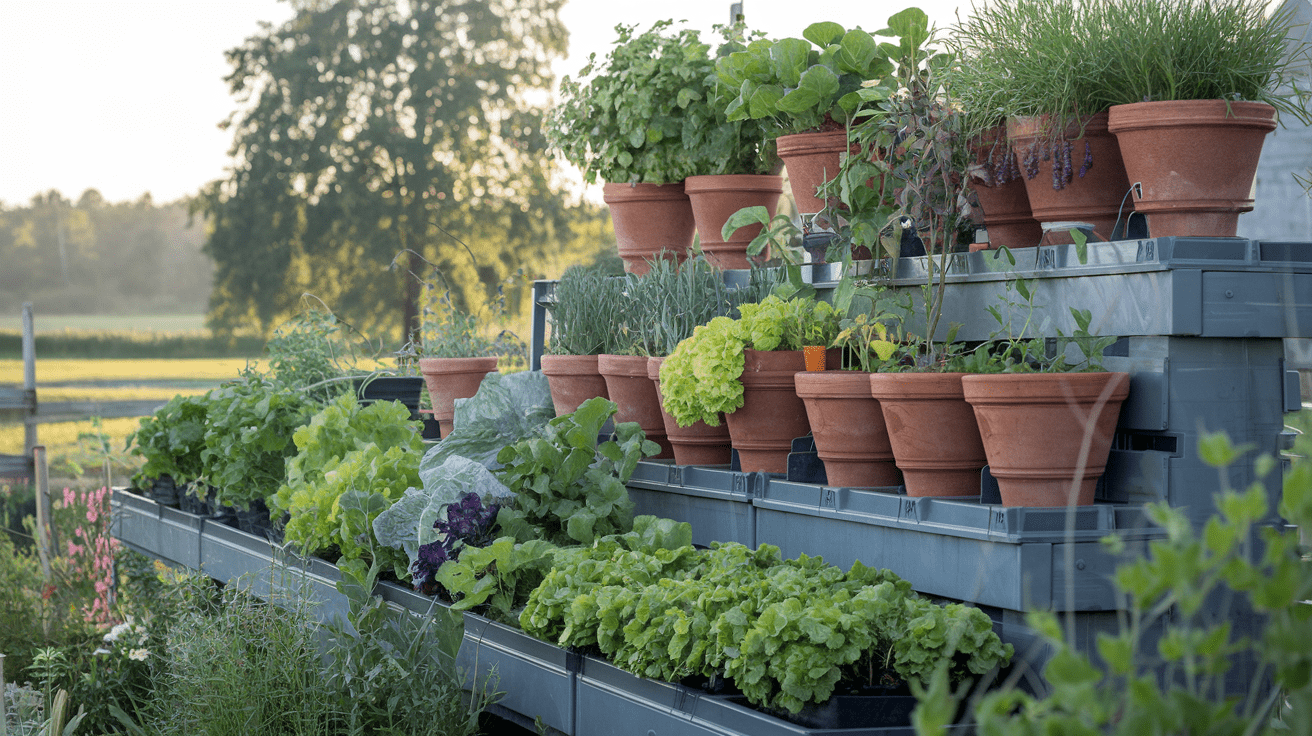
Uses trellises, wall planters, or tiered raised beds to grow upward instead of outward.
- Maximizes space in patios or courtyards.
- Ideal for climbing beans, peas, or cascading strawberries.
Design Tip: Choose a layout that fits your space, sunlight, and gardening style. Blending symmetry with creativity gives your potager both beauty and practicality, the essence of French garden design.
Best Plants for Your Potager Garden
The most successful potagers feature a diverse mix of plants chosen for both their productivity and their ornamental qualities.
The right plant combinations create visual interest while supporting a healthy garden ecosystem.
Consider including the following categories in your garden design:
1. Vegetables
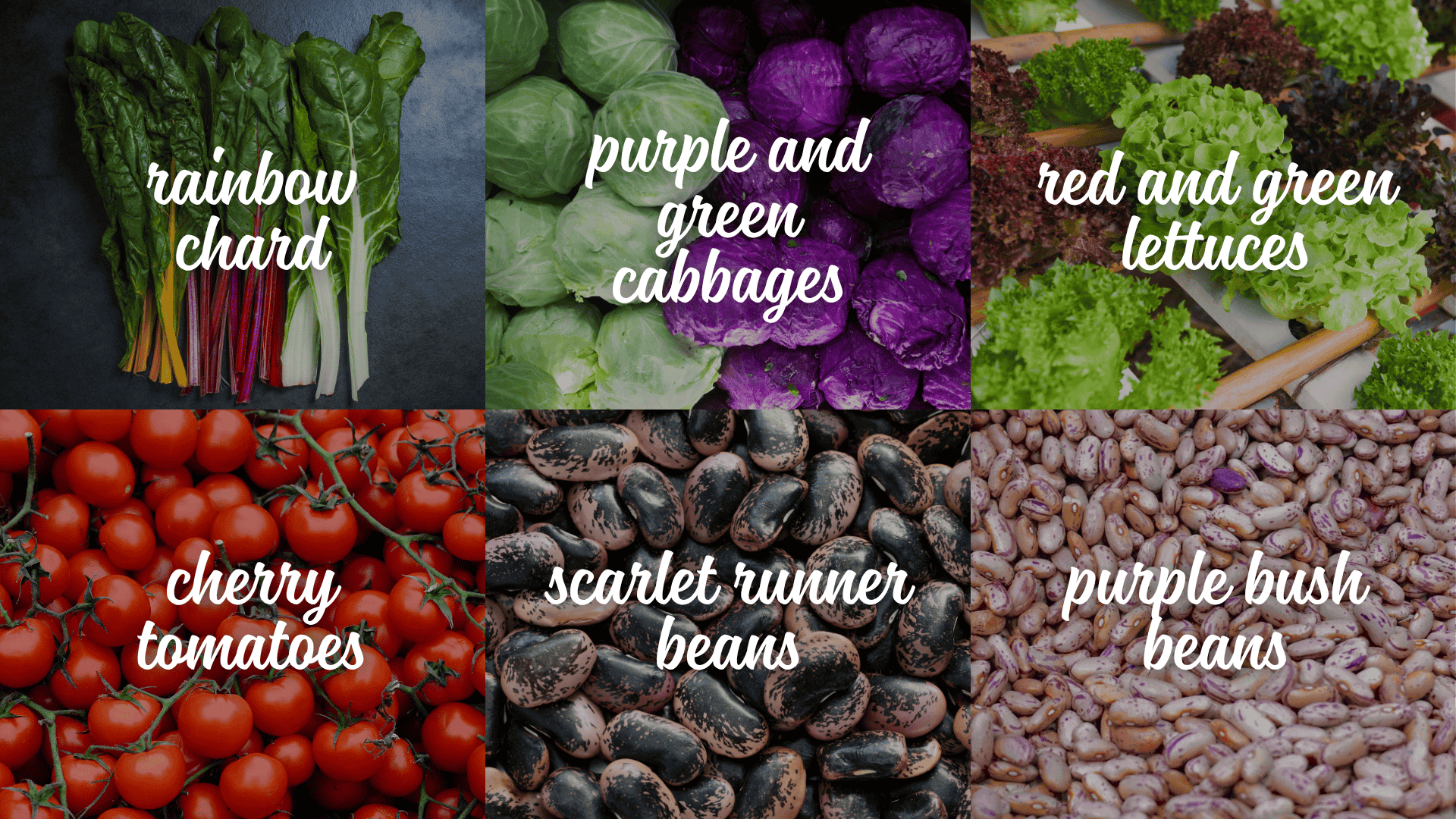
Choose vegetables that offer visual appeal alongside their harvest value.
Colorful varieties make excellent choices:
- Rainbow chard with brilliant stems in red, yellow, and orange.
- Purple and green cabbages that create living sculptures.
- Red and green lettuces that form attractive rosettes.
- Cherry tomatoes on decorative trellises.
- Scarlet runner beans with bright red flowers.
- Purple bush beans for color contrast.
2. Herbs
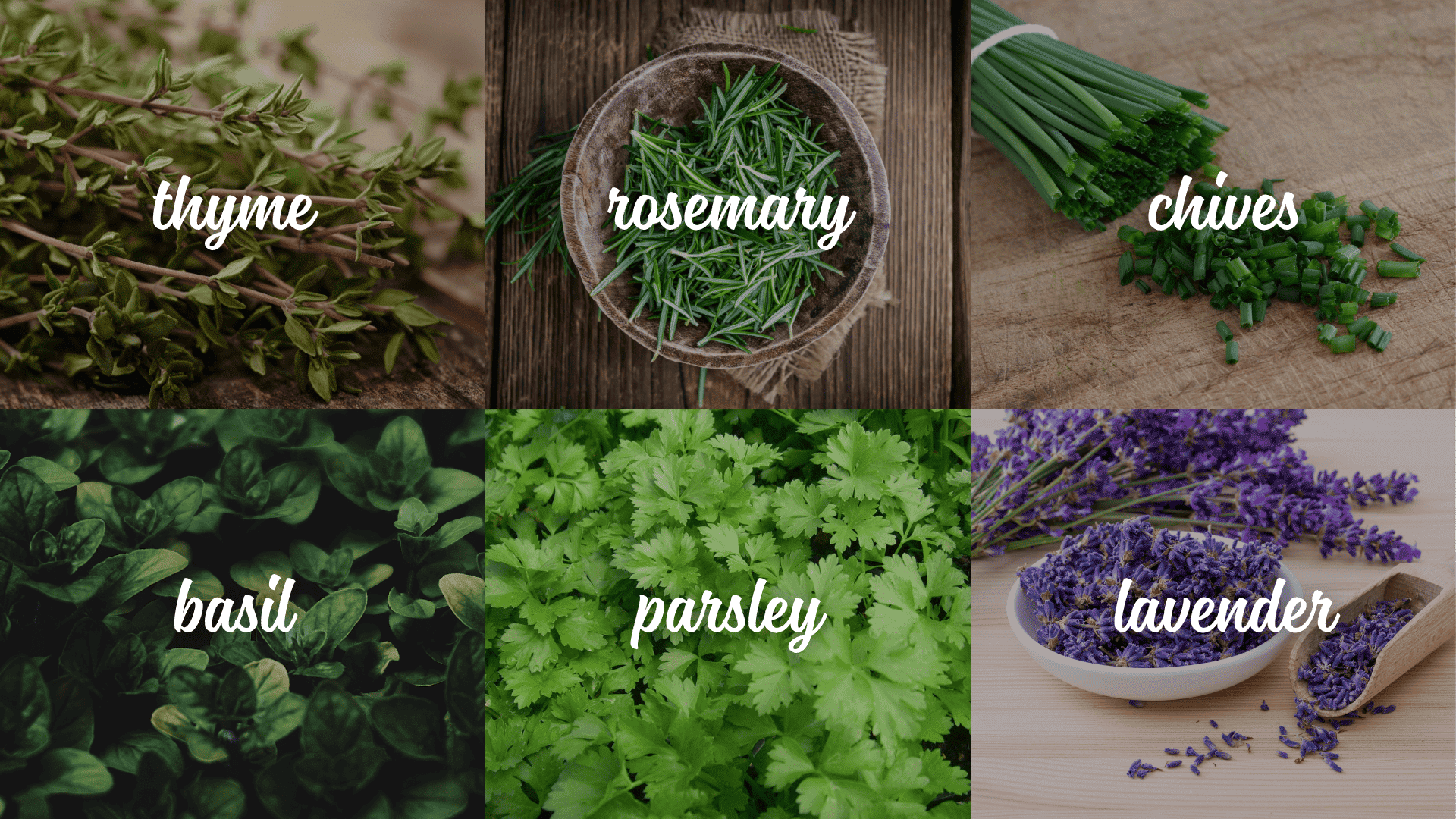
Classic French herbs form the aromatic heart of many potagers:
- Thyme creates a fragrant, low-growing border.
- Rosemary adds year-round structure with its woody stems.
- Chives produce lovely purple flower globes in spring.
- Basil offers lush green foliage and an essential flavor.
- Parsley provides a reliable green texture.
- Lavender brings purple blooms and wonderful fragrance.
3. Flowers
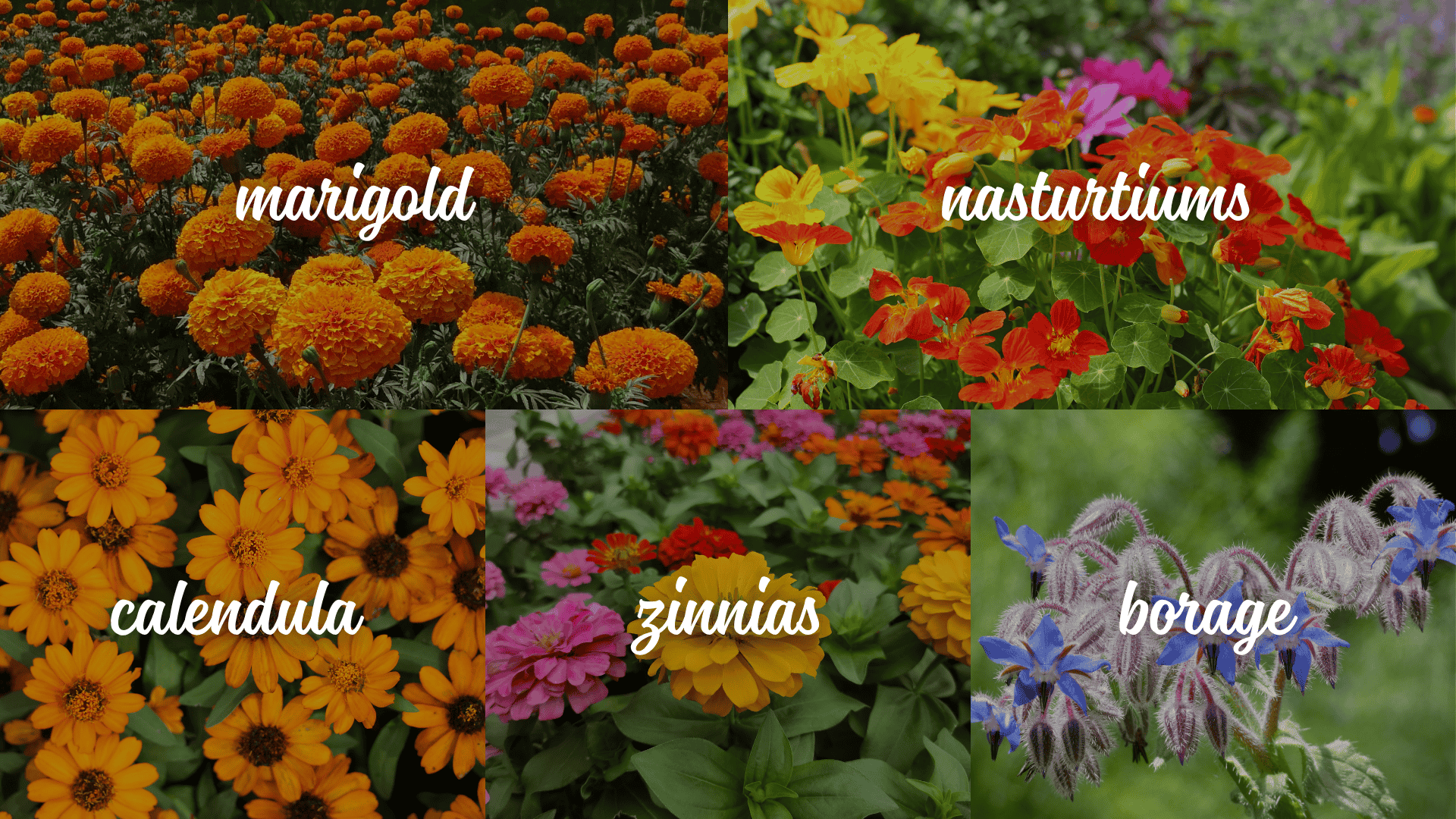
Flowers in the potager serve multiple roles; they attract pollinators, add pops of color, and some are even edible:
- Marigolds protect vegetables from certain pests while adding a golden color.
- Nasturtiums offer edible flowers and leaves with a peppery flavor.
- Calendula blooms continuously and has medicinal properties.
- Zinnias provide long-lasting cut flowers.
- Borage attracts beneficial insects with its blue star flowers.
4. Fruits
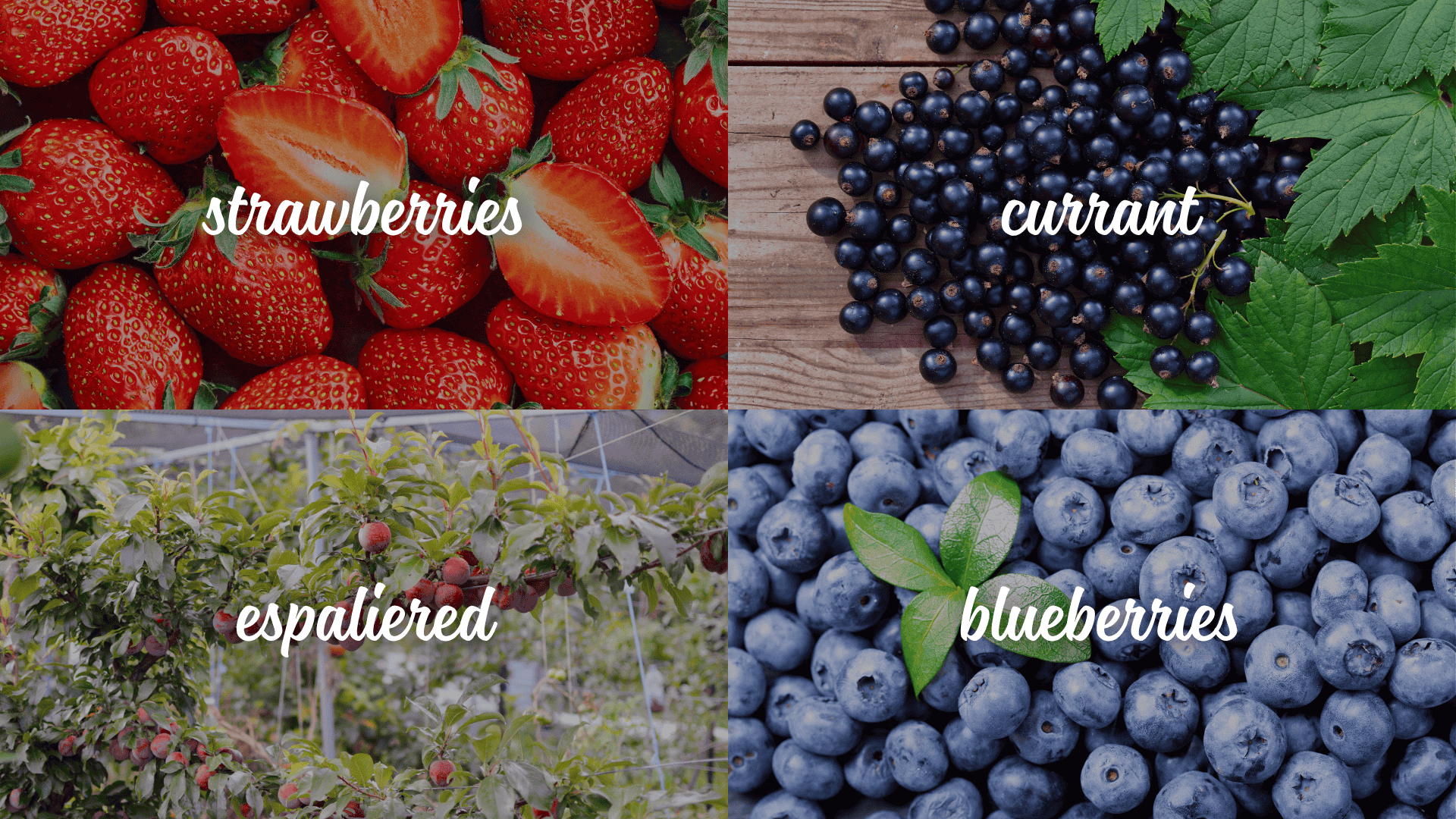
Small fruits integrate beautifully into potager designs:
- Strawberries make excellent edging plants.
- Currant bushes provide structure and delicious berries.
- Espaliered fruit trees trained flat against walls or fences save space while creating living art.
- Blueberries in containers add seasonal interest.
Tips for Maintaining a Potager Garden
A potager garden requires regular care to maintain both its productivity and beauty.
- Crop rotation maintains soil health by moving plant families to different beds each season, tomatoes one year, brassicas the next.
- Organic pest management thrives in potagers where plant diversity supports beneficial insects. Companion planting, like basil near tomatoes, helps deter pests naturally.
- Succession planting ensures a continuous harvest by sowing small amounts every two weeks and replacing spring crops with summer, then fall varieties.
- Tidiness is essential since appearance matters. Remove spent plants promptly, keep edges trimmed, and maintain clear pathways.
Conclusion
A potager garden offers the best of both worlds: abundant harvests combined with thoughtful design.
This approach transforms growing food into a creative expression that’s both practical and beautiful.
Start small with a single 4×4 bed to learn the basics.
As your confidence grows, expand your potager and refine your design to reflect your personal style and food preferences.
Ready to create your own potager garden?
Share your plans or questions in the comments below.
We’d love to hear what you’re growing this season!
Frequently Asked Questions
How Much Space Do I Need for a Potager Garden?
You can create a potager in as little as 50 square feet or scale up to several hundred. An 8×8 foot area can hold four raised beds with paths, while balcony gardeners can apply potager principles to containers.
Can I Start a Potager Garden in the Fall, or Should I Wait until Spring?
Fall is excellent for establishing your potager by building beds, installing pathways, and planting perennial herbs. Cool-season vegetables like lettuce and kale thrive in fall, setting you up for spring success.
Do Potager Gardens Require More Water than Traditional Vegetable Gardens?
Potager gardens use similar water amounts since you’re growing the same plants. Dense planting actually improves efficiency by creating a living mulch that shades the soil and reduces evaporation.

